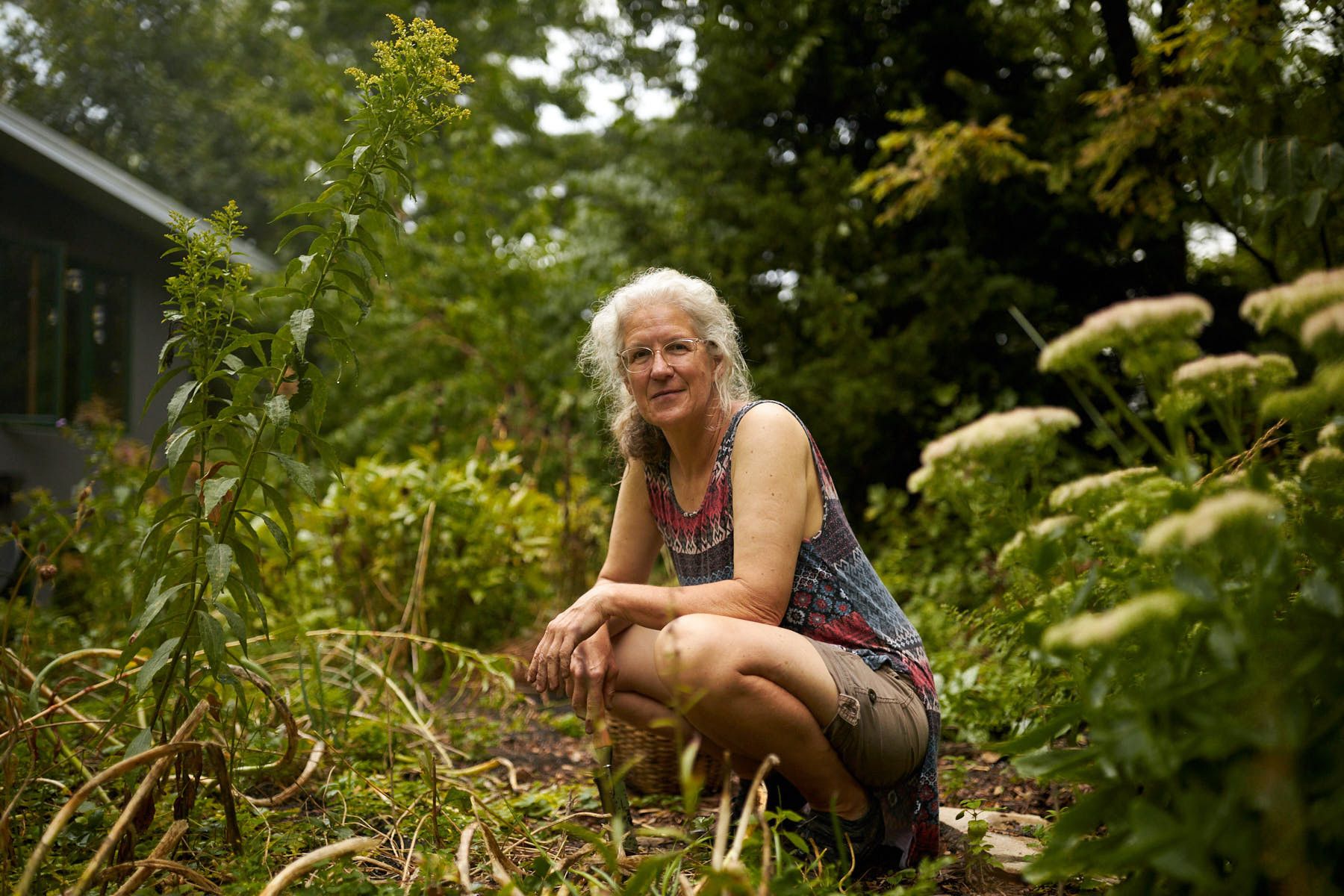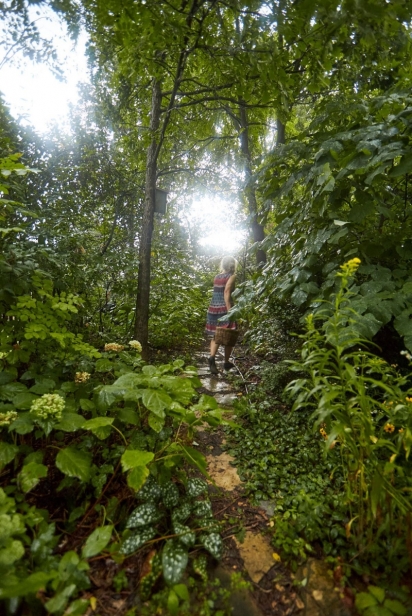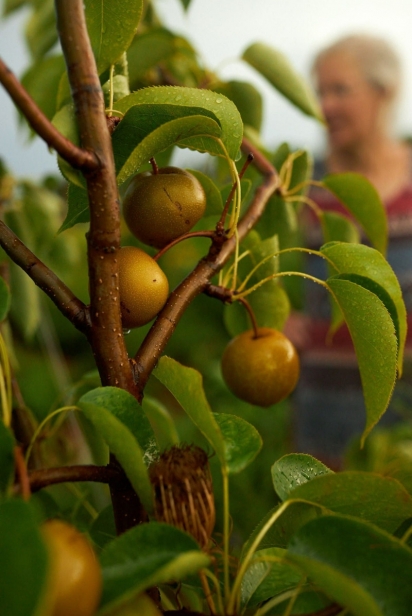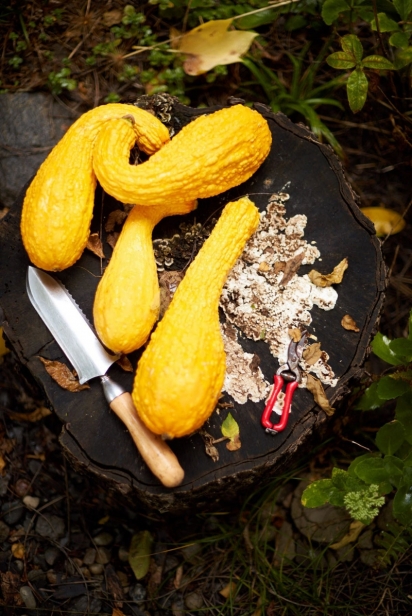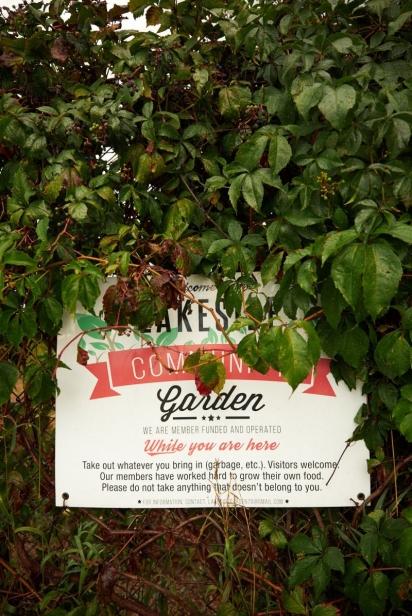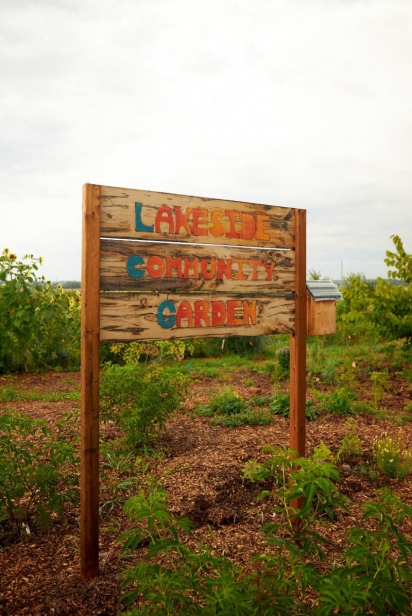Urban Forests to Feed Us
Joyce Hostyn couldn’t stand her lawn when she moved to the suburbs of Kingston with her husband. It was big, sprawling between a quarter and a third of an acre. And in the eyes of this master gardener, it was the epitome of monoculture, providing virtually no benefit
“I hated the grass from the get-go and thought I’m not going to waste my time mowing this,” Hostyn recalls.
Her husband didn’t have the same strong feelings. Still, he partially conceded when Hostyn asked to get rid of the lawn, agreeing for her to have free rein in the backyard only.
Hostyn traded green blades for a few nut trees to start, planting some herself and nurturing the handiwork of the neighbourhood squirrels who forgot about the black walnuts they buried long enough for them to sprout seedlings.
Then, any time her husband would be away from home, Hostyn would work on the front yard. Over time, the grass gave way to a cohesive collection of 10 towering black walnut trees, with pawpaws, persimmons and blackberries growing in the canopy beneath them. Closer to ground level, Hostyn nurtured perennial hostas, sedums, seed lilies and other edible ornamentals.
The different levels were deliberate. Hostyn was planting a food forest, an area strategically cultivated with multiple layers of edible vegetation similar to a forest eco-system in its sustainability and selfsufficien.
Other than the elbow grease put in to establish her food forest, Hostyn’s edible landscape would require little input going forward. The dense plantings would create shade and suppress weeds. Nitrogen- and nutrient-fixing plants would create healthy soil. The diversity of plants would selfseed or attract pollinators to perpetuate crops for seasons to come.
In the process, Hostyn increased the food security of her household and neighbourhood, and the resilience of her community overall.
“Either it’s got to feed the birds or it’s got to feed me,” Hostyn says about her handiwork that looks like a cross between a cultivated and wild space. “Why do we grow monoculture grass? It makes zero sense.”
Hostyn didn’t stop there. In the early 2010s, she attended a meeting hosted by a local permaculture group. The topic: food forests. A relatively newly minted Queen’s University graduate with an interest in permaculture was also in attendance. Nicholas Laan had recently taken a plot at Oak Street Community Garden in an effort to seek new connections with his community.
Though they entered the meeting as strangers, both Hostyn and Laan left determined to change the city’s landscape to include more food forests and edible ecosystems. It’s a movement they argue has taken on greater importance since that initial meeting, particularly in a global pandemic rife with supply chain issues that underscore the tenuousness of our industrial food system.
“What happens if the food ever stops coming (to grocery stores from elsewhere)? This is a way to build resiliency and community,” Laan says.
Seeds of possibility
Planting the seeds of possibility with local bureaucrats wasn’t easy, however. Laan and Hostyn spent the next few years working in tandem to convince the powers that be to swap some of the city’s grassy parkland for fruit and nut trees, berry bushes and food-bearing vines, herbs and nitrogen-fixing root vegetables that would flourish in a symbiotic relationship like they would in nature. In turn, they would help the community flourish, to.
“Municipal parks are dominated by grass,” Hostyn says. “We have a food security crisis, a climate crisis and a biodiversity crisis. We have to switch to something that’s teeming with life and food forests are that.”
They fought concerns about liability — what about wasps and pests drawn to fallen and forgotten fruit? They cleared confusion over the definition of a food forest, its benefits and who would oversee the spaces. They even had to contend with future road allowances and other city planning hurdles in areas they felt were better suited to feeding people.
It would take years, but together, Hostyn and Laan would convince the city to draft a formal food forest policy.
All in, their efforts put Kingston on the map as one of the only cities in Ontario to have a dedicated course of action for community orchards in its urban forestry and sustainability plans.
They also secured permission to plant a narrow swath at Oak Street Community Garden and a two-acre block, part of a prison farm, at Lakeside Park. Thegreen light came in 2015, followed by two years of planning before planting everything from “lost” varieties of apples to more common currants, Saskatoon berries, gooseberries and hazelnuts and vegetables in an effort to restore genetic diversity.
With an eye to a changing climate, there are plans to add other fruit trees not currently suited to Kingston’s growing zone, such as peaches, apricots and sour cherries. The forests and the food they produce belong to anyone and everyone, regardless of who planted them or where they’re located on public land.
“Kingston is ahead of the curve in terms how active and how many community gardens there are, and how engaged residents are with food systems,” says Ayla Fenton, an urban agriculture organizer with the nonprofit Loving Spoonful, which oversees Kingston’s community gardens.
Fenton expects others to catch up and take their cues from the Limestone City as food security and climate change play larger roles in municipal strategic plans.
“The pandemic spurred a lot of municipal governments to think outside the box in terms of food security and recreation services,” she says. “We’re highly, highly dependent on a globalized food system and not always able to get the food we need. Food security was an issue before the pandemic and the only way to address that holistically and sustainably is to develop local food systems.
“But it’s also important to think about it as a communitybuilding initiative to get people [to go] outside, move their bodies, connect with their neighbours — and [add] that public health angle.”
These days, expansion and reframing the idea of cities as concrete jungles to be livable, walkable spaces that can feed residents are a part of Hostyn and Laan’s plan. So is being a model for other communities.
There are three more orchards on public land in the city — one at the Kingston Community Health Centre and two Kingston & Frontenac Housing sites — with more planned. Hostyn is a member of Little Forests Kingston (littleforests. org), a community group working to regenerate Indigenous forests equitably throughout Kingston. Others, like Hostyn’s, are popping up on private tracts and proving this is no passing trend.
Edible ecosystems
Zach Loeks can confirm that. The farmer, author, director of the Ecosystem Solution Institute and edible ecosystem designer hosted 2,000 students earlier in the pandemic in the first virtual course offe ed through EcosystemU, his edible ecosystem design program.
One lesson Loeks tries to instil is to think of them as — and indeed call them — edible ecosystems. Consider the comestible potential of other landscapes, including prairie, savanna and woodland, he says.
Loeks is the son of a permaculture landscape designer. He grew up on a permaculture homestead in New Mexico and comes by his passion for, and knowledge of, land management honestly.
He’s been called on by municipalities, territorial ministries and private land owners to help plan, design and install edible ecosystems. He’s done work in Ottawa, where he oversees the Edible Biodiversity Conservation Area, a 100-acre edible landscape and arboretum on private land near the city; in Winnipeg; and even in the Yukon, underscoring the need for a term less limiting than ‘food forest.’
Loeks’s goal is to spread the word about what he sees as “nononsense” land management solution and design. It’s about creating beautiful, biodiverse, practical and efficien ecosystems in urban and rural areas that mimic what we see in the wild, he said.
And to start thinking of this work as restoring the landscape to what it once was before the trend of building subdivisions, such as Hostyn’s, tamed with sod.
“I always see things as half full, but I do see more people wanting to connect with this ancestral landscape. Even if that’s not the word, that’s the draw,” Loeks says, “Thisis a concept that’s here to stay, especially when we remember it’s always been here. Humans are still finding our stride. The time we’ve been messing up our ecology is a small amount of time… in relation to the environment around us. It’s always been with us and it’s here to stay.”


